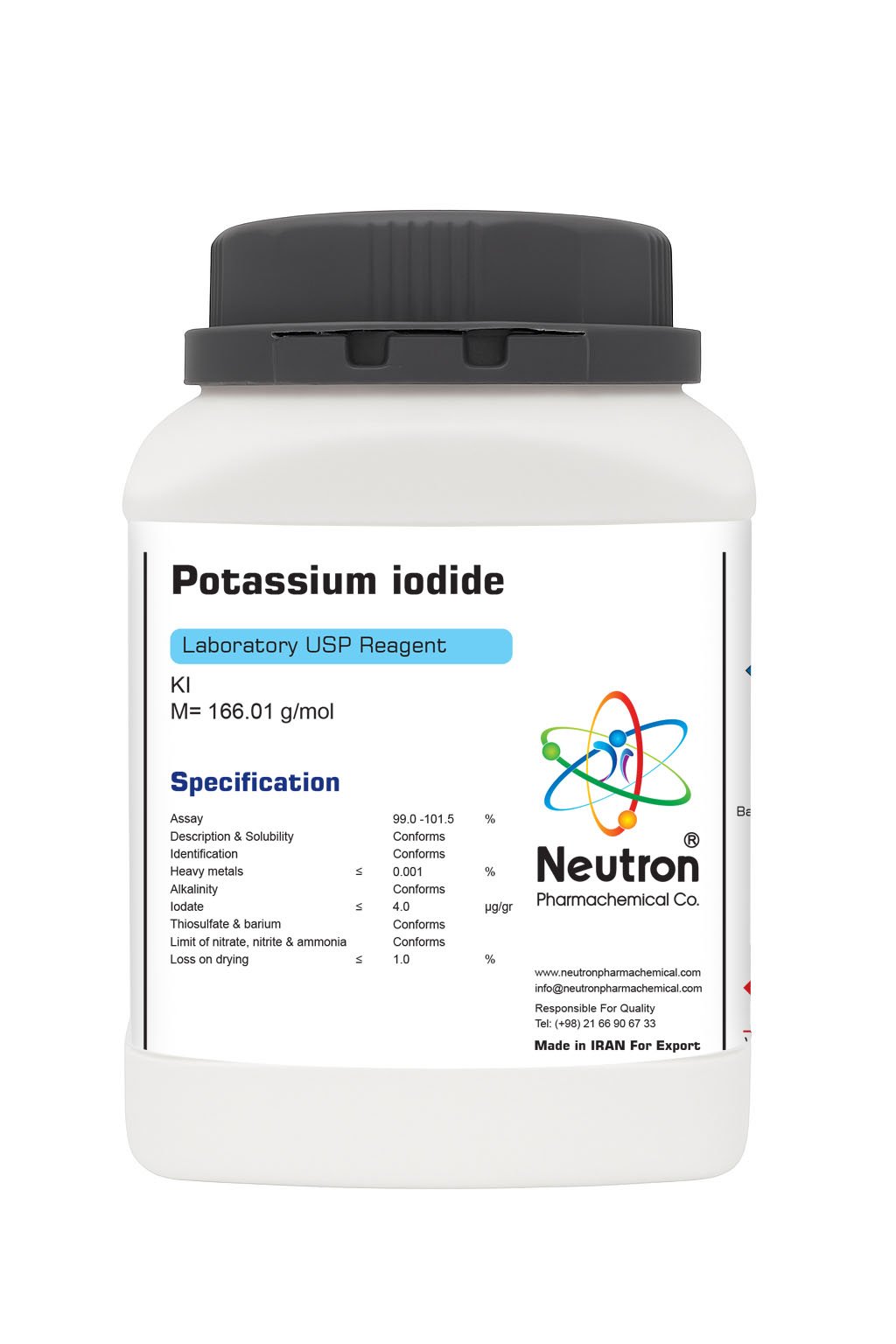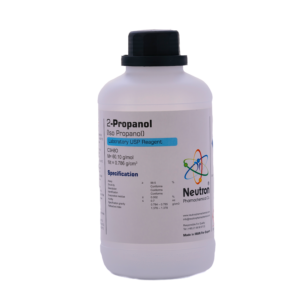Potassium iodide is a white, odorless crystalline salt composed of potassium and iodide ions. It is less hygroscopic than sodium iodide, dissolves readily in water, and may gradually turn yellow when exposed to air or light due to oxidation forming iodine.
🏭⚗️ Production
Potassium iodide is produced by reacting iodine with potassium hydroxide, followed by removal of by-product potassium iodate through crystallization. Alternative methods include reacting hydriodic acid with potassium bicarbonate, or treating iron filings with iodine in water and then neutralizing with potassium hydroxide.
🔬 Properties
• Crystal structure: cubic (similar to sodium chloride)
• Appearance: white crystalline solid or powder; tends to absorb moisture and slowly decompose in moist air
• Melting point: around 681 °C; boiling point: approximately 1,330 °C
• Density: around 3.12 g/cm³
• Highly soluble in water (e.g., ~128 g per 100 mL at 0 °C; higher at elevated temperatures)
• Moderately soluble in alcohols and acetone; less soluble in ether or ammonia
• Refractive index: approximately 1.677
🧪 Applications
Potassium iodide serves multiple purposes:
• As a dietary iodine supplement, added to table salt to prevent iodine deficiency and goiter
• In medicine, used to treat hyperthyroidism and as thyroid protection against radioactive iodine exposure during nuclear emergencies
• As an analytical reagent in chemistry and in photographic emulsions
• Commonly included in animal feed, and used as an expectorant in respiratory treatments





